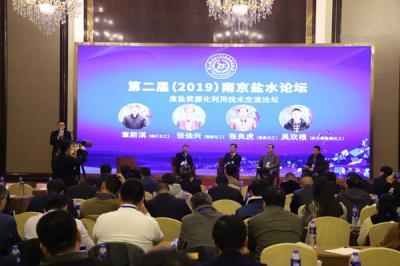Reverse osmosis membrane technology (RO membrane technology) is a high-precision technology in water treatment. Its use greatly prolongs the regeneration cycle of traditional ion exchange equipment, reduces acid and alkali discharge, and effectively protects the ecological environment. Under many influent conditions, it is technically feasible to use ion exchange resin or reverse osmosis, and the choice of process should be determined by economic comparison. Generally speaking, the higher the salt content, the more economical reverse osmosis is. The lower the amount, the more economical is the ion exchange. Due to the popularization of reverse osmosis membrane technology, the use of reverse osmosis, especially the combined process of disk tube reverse osmosis (DTRO) + ion exchange process or disk tube reverse osmosis (DTRO) + other deep desalination technology has become a recognized technical and economical more reasonable water treatment program.
Nanofiltration is a membrane liquid separation technology located between reverse osmosis and ultrafiltration. RO membrane technology can remove the smallest solutes with a molecular weight of less than 0.0001 microns, and nanofiltration can remove solutes with a molecular weight of about 0.001 microns. Nanofiltration is essentially a low-pressure reverse osmosis, which is used in occasions where the purity of the water produced after treatment is not particularly strict. Nanofiltration is suitable for treating well water and surface water. Nanofiltration is suitable for water treatment systems that do not need a high desalination rate like reverse osmosis, but has a high ability to remove hardness components, sometimes called "softening membrane". The operating pressure of the nanofiltration system is low and the energy consumption is lower than corresponding reverse osmosis system.
The maximum allowable concentration of silicon dioxide in the RO membrane technology depends on the temperature, pH value and scale inhibitor. Usually, the maximum allowable concentration at the concentrated water end is 100ppm when no scale inhibitor is added. Some antiscalants can allow the concentration of silica in concentrated water to be up to 240ppm, please consult the relevant antiscalant suppliers.
The reverse osmosis membrane technology is very dense and has a very high removal rate for viruses, phages and bacteria, at least 3log (removal rate > 99.9%). However, it should also be noted that in many cases, microbial re-growth may still occur on the water side of the membrane, which mainly depends on the way of assembly, testing and maintenance. That is to say, the ability of a system to remove microorganisms depends critically on the proper design, operation and management of the system rather than the properties of the membrane elements themselves.




 +86-25-58849045
+86-25-58849045
 +86-25-58749295
+86-25-58749295
 jiuwu@jiuwu.com
jiuwu@jiuwu.com
 No. 9 Park Road, Pukou District, Nanjing City (Sanqiao Factory)
No. 9 Park Road, Pukou District, Nanjing City (Sanqiao Factory) Call us on:
Call us on:  Email Us:
Email Us:  No. 9 Park Road, Pukou District, Nanjing City (Sanqiao Factory)
No. 9 Park Road, Pukou District, Nanjing City (Sanqiao Factory)

 English
English 한국어
한국어 français
français русский
русский Español
Español

